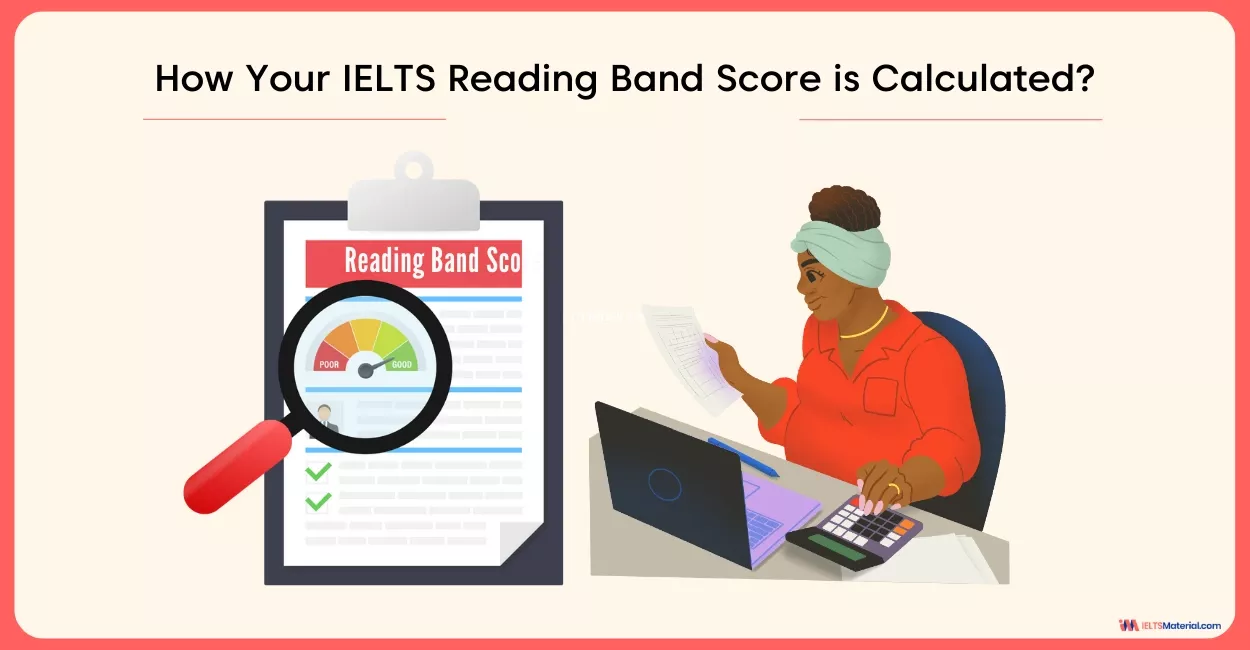Malaria Reading Answers
12 min read
Updated On
-
Copy link
Test your IELTS Academic Reading skills with Malaria Reading Answers & get a self-check to prepare for your desired band 9 score. Find the answers along with explanations and learn to handle different IELTS Reading questions types.
Table of Contents

Limited-Time Offer : Access a FREE 10-Day IELTS Study Plan!
In order to answer questions from IELTS Academic passages like Malaria Reading Answers, you have to learn how to ace IELTS Reading with 'Keyword Technique' and locate the answer within the limited duration of the exam. Therefore, practising passages like Malaria IELTS Reading Answers ensure that you are able to master time management and attempt all questions within the given timeframe to achieve a reading band score of 9.
Here, we will guide you to solve the IELTS Reading practice test, provide explanations with locations for the answers and provide tips on how to approach IELTS Reading with optimal time management strategies. Let’s get started!
Not sure how to answer IELTS Reading Matching Headings questions? Check out the video below for the latest tips and strategies!
Reading Passage for Malaria Reading Answers
Go through the Malaria Reading Answers passage given below using the reading techniques and understand how to get more correct answers for a high IELTS band score!
You should spend about 20 minutes on Questions 27-40, which are based on the Reading Passage below.
Malaria
A Approximately 300 million people worldwide are affected by malaria and between 1 and 1.5 million people die from it every year. Previously extremely widespread, malaria is now mainly confined to Africa, Asia and Latin America. The problem of controlling malaria in these countries is aggravated by inadequate health structures and poor socio-economic conditions. The situation has become even more complex over the last few years with the increase in resistance to the drugs normally used to combat the parasite that causes the disease.
B Malaria is caused by protozoan parasites of the genus Plasmodium. Four species of Plasmodium can produce the disease in its various forms: plasmodium falciparum, plasmodium vivax, plasmodium ovale and plasmodium malaria. Plasmodium falciparum is the most widespread and dangerous of the four: untreated it can lead to fatal cerebral malaria. Malaria parasites are transmitted from one person to another by the female anopheline mosquito. The males do not transmit the disease as they feed only on plant juices. There are about 380 species of anopheline mosquito, but only 60 or so are able to transmit the parasite. Their sensitivity to insecticides is also highly variable.
C Plasmodium develops in the gut of the mosquito and is passed on in the saliva of an infected insect each time it takes a new blood meal. The parasites are then carried by the blood into the victim’s liver where they invade the cells and multiply. After nine to sixteen days they return to the blood and penetrate the red cells where they multiply again, progressively breaking down the red cells. This induces bouts of fever and anemia in the infected individual. In the case of cerebral malaria the infected red cells obstruct the blood vessels in the brain. Other vital organs can also be damaged often leading to the death of the patient.
D Malaria is diagnosed by the clinical symptoms and microscopic examination of the blood. It can normally be cured by anti-malarial drugs. The symptoms – fever, shivering, pain in the joints and headache – quickly disappear once the parasite is killed. In certain regions, however, the parasites have developed resistance to certain antimalarial drugs, particularly chloroquine. Patients in these areas require treatment with other more expensive drugs. In endemic regions where transmission rates are high, people are continually infected so that they gradually develop immunity to the disease. Until they have acquired such immunity, children remain highly vulnerable. Pregnant women are also highly susceptible since the natural defense mechanisms are reduced during pregnancy.
E Malaria has been known since time immemorial but it was centuries before the true causes were understood. Surprisingly in view of this some ancient treatments were remarkably effective. An infusion of qinghao containing artemisinin has been used for at least the last 2000 years in China and the antifebrile properties of the bitter bark of Cinchona Ledgeriana were known in Peru before the 15th century. Quinine, the active ingredient of this potion, was first isolated in 1820 by the pharmacists. Although people were unaware of the origin of malaria and the mode of transmission, protective measures against the mosquito have been used for many hundreds of years. The inhabitants of swampy regions in Egypt were recorded as sleeping in tower-like structures out of the reach of mosquitoes, whereas others slept under nets as early as 450 B.C.
F Malaria has social consequences and is a heavy burden on economic development. It is estimated that a single bout of malaria costs a sum equivalent to over 10 working days in Africa. The cost of treatment is between $US0.08 and $US5.30 according to the type of drugs prescribed as determined by local drug resistance. In 1987 the total cost of malaria – health care, treatment, lost production, etc. – was estimated to be $US800 million for tropical Africa and this figure is currently estimated to be more than $US1800 million.
G The significance of malaria as a health problem is increasing in many parts of the world. Epidemics are even occurring around traditionally endemic zones in areas where transmission has been eliminated. These outbreaks are generally associated with deteriorating social and economic conditions and the main victims are underprivileged rural populations. Economic and political pressures compel entire populations to leave malaria free areas and move into endemic zones. People who are non-immune are at high risk of severe disease. Unfortunately, these population movements and the intensive urbanization are not always accompanied by adequate development of sanitation and health care. In many areas conflict, economic crises and administrative disorganization can result in the disruption of health services. The absence of adequate health services frequently results in recourse to self-administration of drugs often with incomplete treatment. This is a major factor in the increase in resistance of the parasites to previously effective drugs.
H The hope of global eradication of malaria was finally abandoned in 1969 when it was recognised that this was unlikely ever to be achieved. Ongoing control programs remain essential in endemic areas. In all situations control programs should be based on half a dozen objectives: provision of early diagnosis, prompt treatment to all people at risk, selective application of sustainable preventive measures, vector control adapted to the local situations, the development of reliable information on infection risk and assessment of living conditions of concerned populations.Malaria is a complex disease but it is a curable and preventable one.
Want to learn tips on time management from IELTS Experts?
Questions for Malaria Reading Answers
There are three types of IELTS Reading question types in Malaria Reading Answers. They are:
Now set your timer and complete these questions within the time limit!
Questions 27-40
The reading passage on Malaria has eight paragraphs (A–H).
From the list of headings below choose the most suitable headings for paragraph B-H.
Write the appropriate number (i – xi) in boxes 27 – 33 on your answer sheet.
NB: There are more headings than paragraphs, so you will not use them all.
i. Old Remedies
ii. Fatality Rates
iii. Shifting Demographics Causes Further Problems
iv. The Current Situation
v. The Bug and Its Carrier
vi. Total Elimination of Malaria
vii. Tackling Malaria Today
viii. Transmission to Humans and Effects
ix. Local African Medicine
x. Malaria Effects on the Community
xi. Identification
|
Example |
Answer |
|
Paragraph A |
iv |
27 Paragraph B
28 Paragraph C
29 Paragraph D
30 Paragraph E
31 Paragraph F
32 Paragraph G
33Paragraph H
Questions 34 - 36
Do the following statements agree with the information given in the Reading Passage?
In boxes 34-36 on your answer sheet, write
YES if the statement agrees with the view of the writer
NO if the statement contradicts the view of the writer
NOT GIVEN if it is impossible to say what the writer thinks about this
34 Ancient Peruvian doctors were famous for their malarial treatment.
35 Children are always under great threat from malaria.
36Poorer people are usually more at risk from malaria.
Questions 37 - 40
Complete the following statements with the best ending from the box below, A-H, according to the information in the Reading Passage.
Write the appropriate letter, A-H, in boxes 37 - 40 on your answer sheet.
NB There are more sentence endings than questions so you will not need to use them all.
List of Endings
A have finally been eradicated.
B are not always affected by insecticides.
C are the results of incompetent doctors.
D are always female.
E have been taken for hundreds of years.
F should be based on seven clear goals.
G have resulted in parasitic resistance to treatment.
H are later found again in the bloodstream.
37 Anopheline mosquitoes
38 Parasites located in victims’ livers
39 Unfinished courses of anti-malarial drugs
40 Control programs to protect people from malaria
Download the Malaria Reading Answers PDF, complete with questions for future practice!
Malaria Reading Answers with Location and Explanation
Tally your answers of the IELTS Academic Reading passage, Malaria Reading Answers, with the answer key given below. For easy review, each answer includes its location and explanation within the passage.
| Question number | Answer | Explanation |
|---|---|---|
| 27 | v | Paragraph B puts forward the idea that “four species of Plasmodium can produce the disease in its various forms: plasmodium falciparum, plasmodium vivax, plasmodium ovale and plasmodium malaria.” Moreover, “malaria parasites are transmitted from one person to another by the female anopheline mosquito.” From the above information, we can comprehend that this passage discusses the disease and what species carries and transmits these diseases. Hence, the appropriate heading is “v.” |
| 28 | viii | Paragraph C states that “the parasites are then carried by the blood into the victim’s liver where they invade the cells and multiply. After nine to sixteen days, they return to the blood and penetrate the red cells, where they multiply again, progressively breaking down the red cells. This induces bouts of fever and anaemia in the infected individuals.” This passage appears to discuss the ways malaria is transmitted to humans and what effects it leaves on humans. Hence, the appropriate heading is “viii.” |
| 29 | vii | The first line of paragraph D mentions that “malaria is diagnosed by the clinical symptoms and microscopic examination of the blood. It can normally be cured by anti-malarial drugs.” From the phrase ‘cured by anti-malarial drugs’, we can deduce how malaria is tackled today. Hence, the appropriate heading is “vii.” |
| 30 | i | The first line of paragraph E conveys that “surprisingly in view of this some ancient treatments were remarkably effective.” The term ancient refers to something dating from the past. Therefore, it implies that this passage refers to old remedies to cure diseases like malaria. Hence, the appropriate heading is “i.” |
| 31 | x | In paragraph F, the author states that “malaria has social consequences and is a heavy burden on economic development.” This passage mentions the effects malaria has on the community. Hence, the appropriate heading is “x.” |
| 32 | iii | Paragraph G discusses that “these population movements and the intensive urbanisation are not always accompanied by adequate development of sanitation and health care.” Thus, movement or shift exacerbates problems. Hence, the appropriate heading is “iii.” |
| 33 | xi | According to paragraph H, “the hope of global eradication of malaria was finally abandoned in 1969 when it was recognised that this was unlikely ever to be achieved.” From the word ‘recognised’, we can infer that the disease cannot be eradicated but control measures can be taken. Hence, the appropriate heading is “xi.” |
| 34 | NOT GIVEN | None of the paragraph confirms or denies that ancient Peruvian doctors were famous for their malarial treatment. Hence, the correct answer is “NOT GIVEN.” |
| 35 | FALSE | As per paragraph D, “until they have acquired such immunity, children remain highly vulnerable.” Since children who have acquired immunity are safe, it implies that not all children are under threat of malaria. As the statement contradicts the statement, the correct answer is “FALSE.” |
| 36 | TRUE | In paragraph A, there’s a line that states that “the problem of controlling malaria in these countries is aggravated by inadequate health structure and poor socio-economic conditions.” Besides that, a line in paragraph G mentions that “outbreaks are generally associated with deteriorating social and economic conditions, and the main victims are the underprivileged rural population.” Both these lines confirm that poorer people are usually more at risk from malaria. As the statement agrees with the information, the correct answer is “TRUE.” |
| 37 | B | The last line of paragraph B conveys that “their sensitivity to insecticides is also highly variable.” Insecticides are chemicals created to kill various types of insects. Since anopheline mosquitoes’ sensitivity to these insecticides are highly variable, it infers that they are not always affected by these insecticides. Hence, the correct answer is “B.” |
| 38 | H | In paragraph C, a line mentions that “parasites are then carried by the blood into the victim’s liver where they invade the cells and multiply. After nine to sixteen days they return to the blood and penetrate the red cells where they multiply again, progressively breaking down the red cells.” The earlier line confirms that parasites are carried or located in victims’ livers and later found in the bloodstream. Hence, the correct answer is “H.” |
| 39 | E | Paragraph E provides the information that “although people were unaware of the origin of malaria, and mode of transmission, protective measures against the mosquito have been used for many hundreds of years.” Thus, it signifies that unfinished courses of antimalarial drugs have been used or taken for hundreds of years. Hence, the correct answer is “E.” |
| 40 | G | According to paragraph D, “in certain regions, however, the parasites have developed resistance to certain antimalarial drugs.” The term ‘developed resistance’ confirms that control programs to protect people from malaria have resulted in parasitic resistance to treatment. Hence, the correct answer is “G.” |
Get high scores on passages like Malaria Reading Answers by using our exclusive IELTS Reading guide!
Tips for Answering the Question Types in Malaria Reading Answers
Have a look at the IELTS exam preparation tips for band score of 8+ in the reading module for each question type in Malaria IELTS Reading Answers that will help you to solve similar questions.
1 Matching Headings to Paragraphs (Questions 27–33)
- Read the paragraph carefully, not just the first sentence – While topic sentences can help, the main idea might be clarified later.
- Summarize the paragraph in 3–5 words in your mind before looking at the headings.
- Watch for keywords (e.g., names of diseases, effects, solutions, history, etc.) and match them with synonyms in the heading options.
- Beware of distractors – Many headings might include similar words but refer to different concepts. For example, ‘Effects on humans’ vs ‘Effects on communities’.
- Use elimination – Cross out headings you’ve already used or that clearly don’t fit, to narrow your options.
- Paraphrasing is key – IELTS rarely uses the exact same wording in the passage and heading.
2 Yes/No/Not Given (Questions 34–36)
- Scan for opinion markers – Look for words that show belief or judgment, like, ‘The writer believes…’, ‘It is widely accepted…’, ‘Many experts argue…’, ‘Critics claim…’, etc. These are indicators that the passage is expressing an opinion, not just stating a fact.
- Pay close attention to who holds the opinion – Make sure it’s the author’s opinion, not just something another person or group says in the passage. IELTS often presents others’ views to confuse you.
- Break the statement into parts – If even one part of the statement is not supported or is missing from the passage, the correct answer is likely NO or NOT GIVEN.
- Avoid assuming based on your own knowledge or logic – If the opinion isn’t directly stated or implied by the writer, even if it seems obvious, the answer is NOT GIVEN.
3 Sentence Completion with Endings (Questions 37–40)
- Read the sentence stem and predict how it might end before looking at the options.
- Match grammar and logic – The ending must form a grammatically correct and logically meaningful sentence.
- Look for clear connections – Use the stem to locate the corresponding section in the passage. Pay attention to the subject (e.g., ‘parasites’, ‘mosquitoes’).
- Match meaning, not just keywords – Even if words are repeated, make sure the idea fits.
- Watch out for distractors – Some endings will sound right but don’t appear in the context of the relevant paragraph.
- Use elimination – Cross out endings that don’t logically fit the sentence stem.
In conclusion, practice the IELTS Reading recent actual tests, such as Malaria IELTS Reading Answers. They are essential for IELTS reading preparation, and a focused practice schedule can result in a notable increase in band score.
Check More IELTS Reading Answers
- William Gilbert and Magnetism, Seed Hunting, The Power of Nothing IELTS Reading Answers
- The Little Ice Age Reading Answers
- Been There Done That In Zero Gravity Answers
- South Pole Adventurer Reading Answers
- The Students Problem Reading Answers
- Why Risks Can Go Wrong Answers
- 900 Years The Restorations Of Westminster Abbey Answers
- A New Fair Trade Organization Answers
Practice IELTS Reading based on question types

Start Preparing for IELTS: Get Your 10-Day Study Plan Today!
Explore other Reading Practice Tests

Nehasri Ravishenbagam

Nehasri Ravishenbagam

Kasturika Samanta

Kasturika Samanta
Recent Articles

Nehasri Ravishenbagam

Haniya Yashfeen

Haniya Yashfeen

Haniya Yashfeen




Post your Comments